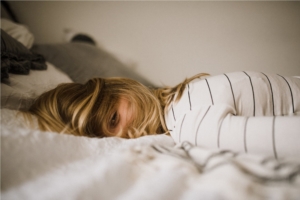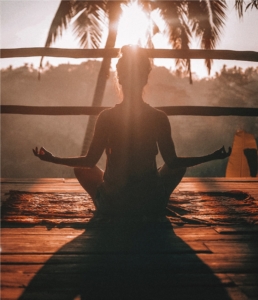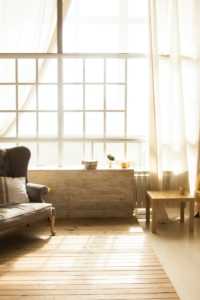Does your mood seem to shift with the calendar, causing you to feel “down” more than usual during the winter months? Do shorter days and gloomy weather seem to zap your energy and make you feel blue? If so, you may be suffering from Seasonal Affective Disorder.
 What is Seasonal Affective Disorder?
What is Seasonal Affective Disorder?
Seasonal Affective Disorder (SAD) is a type of depression characterized by a recurring seasonal pattern that comes and goes at the same time each year. Symptoms usually begin and end when the seasons change. Typically, you start feeling “down” as the days get shorter in late fall or early winter and the lack of sunlight saps your energy, affecting your mood as well.
Then, gradually, you begin to feel yourself again as the daylight hours start to get longer in the spring. Though Seasonal Affective Disorder happens most often in the fall or winter, there is also a rare form of it, known as “summer depression,” that starts in late spring or early summer and ends in the fall.
What are the Symptoms of Seasonal Affective Disorder?
Symptoms of Seasonal Affective Disorder may include:
- Feeling lethargic, tired, hopeless, and/or sad most of the day, nearly every day.
- Loss of interest in hobbies and activities you usually enjoy.
- Social withdrawal and a desire to be alone.
- Reduced sex drive.
- Changes in sleep patterns, such as sleeping too much, having difficulty waking up in the morning, and feeling drowsy during the day.
- Changes in appetite, such as feeling more hungry than usual, craving high-carb foods, and gaining weight as a result.
- Trouble concentrating, thinking clearly, and/or making decisions.
What Causes Seasonal Affective Disorder?
The specific cause of Seasonal Affective Disorder remains unknown, but the predominant theory seems to be that shorter daylight hours and lack of sunlight affect the body’s circadian rhythms, as well as its production of melatonin and serotonin, two chemicals in your brain that help regulate your sleep-wake cycles, energy, and mood.
 Melatonin. Melatonin is a sleep-related hormone that your body produces when it’s dark to help you sleep. The shorter amount of daylight hours in fall and winter can disrupt the balance of your body’s level of melatonin, increasing its production and causing you to feel drowsy and lethargic during the day.
Melatonin. Melatonin is a sleep-related hormone that your body produces when it’s dark to help you sleep. The shorter amount of daylight hours in fall and winter can disrupt the balance of your body’s level of melatonin, increasing its production and causing you to feel drowsy and lethargic during the day.
Serotonin. Serotonin is a body chemical that helps regulate your mood. The reduced level of sunlight during the shorter days of fall and winter can cause a drop in your body’s serotonin levels, which may adversely affect your appetite, memory, and frame of mind.
Circadian rhythm. Your body uses the alternating changes between light and dark to regulate your sleep-wake cycle, mood, and appetite. When the days get shorter during the fall and winter months and there’s less sunlight, it may disrupt your body’s internal clock, causing it to shift. This triggers symptoms of seasonal affective disorder, such as feeling groggy and sleepy at inconvenient times.
Vitamin D deficiency. Sunlight helps produce vitamin D in your body, which boosts your serotonin level. Less sun due to the shorter days in fall and winter can lead to a vitamin D deficiency that affects your serotonin level and your mood.
Treatment Options
Light therapy. Light therapy, also known as phototherapy, is one of the most popular treatments for seasonal affective disorder. It’s a first-line option that mimics natural outdoor sunlight and is thought to cause changes in brain chemicals linked to mood.
Treatment consists of sitting a few feet away from a special lamp called a light box that exposes you to very bright light for 30 to 45 minutes first thing each morning. Light therapy causes very few side effects, and you can usually start feeling the effects within a few days, although it may take about two weeks before you get the full benefits.
 Dawn simulation. Many people with seasonal affective disorder sleep more than usual during the winter months and have trouble getting out of bed in the morning. Dawn simulation is a form of light therapy that involves timing wake-up lights in your bedroom that come on gradually over a period of thirty minutes to two hours before you wake, gradually increasing the intensity of the light so as to create a virtual sunrise in your room.
Dawn simulation. Many people with seasonal affective disorder sleep more than usual during the winter months and have trouble getting out of bed in the morning. Dawn simulation is a form of light therapy that involves timing wake-up lights in your bedroom that come on gradually over a period of thirty minutes to two hours before you wake, gradually increasing the intensity of the light so as to create a virtual sunrise in your room.
As the light starts to get brighter, it triggers your body to begin its wake-up cycle so that by the time it is at its full brightness, you wake up on your own to what looks like a sunny morning, which can help reset your body’s circadian rhythm and improve your mood.
Cognitive behavioral therapy (CBT). Cognitive behavioral therapy is based on the premise that the way you think and behave affects the way you feel. It is a type of talk therapy that helps you learn healthy ways to cope with Seasonal Affective Disorder by identifying and replacing distorted thoughts and negative behaviors and helping you learn how to manage your symptoms and deal with stress in healthy ways.
Antidepressants. In some cases, prescription medications are used to help correct the chemical imbalances in your brain that affect your mood and energy level.
Self-help Tips
Make your environment as light and airy as possible. Keep blinds or curtains open; remove anything that blocks sunlight from streaming in; and sit as close as you can to bright, sunny windows.
Spend time outdoors. Getting as much natural daylight as possible can help improve symptoms. Take walks, soak up the sun, and spend time outdoors every day even when it’s cloudy.
Stay connected. Reach out to your friends and engage in regular activities. Let your family and friends help you. Being alone and isolating yourself can make your symptoms worse.
 Join a support group. Sharing what you’re going through with others facing the same problems that you are can help you feel better, as well as provide encouragement and inspiration to make positive changes.
Join a support group. Sharing what you’re going through with others facing the same problems that you are can help you feel better, as well as provide encouragement and inspiration to make positive changes.
Exercise regularly. Physical activity—particularly outdoors—helps relieve stress and anxiety, and has been shown to boost your mood.
Do things that make you feel better. Doing things you enjoy or even doing something nice for someone else can lift your mood and help you feel better.
Set realistic goals. Don’t take on too much. Set priorities, and break larger tasks down into smaller ones if needed. Focus on the positives, and give yourself credit for the things you can do, instead of knocking yourself for the things you can’t.
Eat healthy, well-balanced meals. Cutting back on complex carbs and focusing instead on fruits, veggies, whole grains, and foods rich in omega-3 fats such as salmon, eggs, and nuts, can help keep your energy up and minimize mood swings.
Develop a regular sleep routine. Keeping a regular sleep-wake routine can help regulate your body clock by exposing you to light at consistent and predictable times.
Journal. Write down your feelings, thoughts, triggers, and concerns, as well as the things that seem to help you or that make you feel worse. Look for the positives in your day, instead of just the parts that aren’t perfect, and write down all the things you can find to be grateful for as well.
Christian Counseling for SAD
Christian counseling involves a combination of biblical principles and clinical intervention. If you are struggling with seasonal affective disorder and are having trouble handling the process on your own, please give us a call today. We would be happy to answer your questions and/or set up an appointment to discuss how we can help you manage the challenges you are facing and walk you through the healing process.
Resources:Maria Cohut, Ph.D. (November 24, 2017). How can you cope with Seasonal Affective Disorder? Medical News Today, medicalnewstoday.com/articles/320163.
Seasonal Affective Disorder. National Institute of Mental Health, https://www.nimh.nih.gov/health/publications/seasonal-affective-disorder.
Seasonal Depression (Seasonal Affective Disorder). Cleveland Clinic, https://my.clevelandclinic.org/health/diseases/9293-seasonal-depression.
“Cave Mouth”, Courtesy of Tobias Tullius, Unsplash.com, CC0 License; “Stressed Out”, Courtesy of Kinga Cichewicz, Unsplash.com, CC0 License; “Yoga”, Courtesy of Jared Rice, Unsplash.com, CC0 License; “Comfortable Room”, Courtesy of Tetiana SHYSHKINA, Unsplash.com, CC0 License











